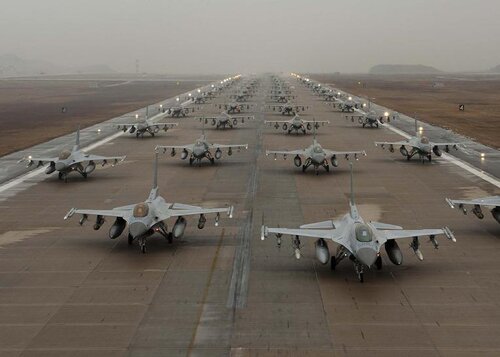In November of 1989, the master plan for the Sae-Man-Geum Project was established. At the time, President Roh Tae-woo’s government established the project and announced it as a way to utilize the newly claimed land for agriculture. In November of 1991, construction began on the seawalls and in April of 2006, 15 years later, work finished connecting the seawalls to fend off the sea water from the newly claimed land.
Differing from the initial goal, the Sae-Man-Geum (SMG from here on) Project’s goal changed as the domestic and foreign situations changed: The consumption of rice decreased, the agricultural products import increased, etc. In December of 2007, this project was no longer for expanding farmland, but became one for forming a developing city, modeled after Dubai and Macao.
In 2010, based on the October 2008 ‘Basic Design Change of the SMG Internal Development,’ the SMG Project Promotion Planning Team under the Prime Minister’s Office changed the land use ratio from the previous 100% agricultural use to 7 to 3 agricultural to non-agricultural use; and then further revised to 3 to 7 ratio of agricultural to non-agricultural use. The developmental direction was vastly changed from farmland creation to a complex development aiming at a Northeast Asian economic hub. Nonetheless, the SMG Comprehensive Development Plan was confirmed only in March, 2011. In September 2013, the Saemangeum Development and Investment Agency (SDIA) was started and pertinent businesses were transferred, and in 2018 the Saemangeum Development Corporation was embarked under President Moon Jae-in’s government.
Yang Choong-mo, the administrator of SDIA said, “Currently SDIA has planned a large-scale renewable energy cluster of about 3 GW scale and is carrying it out. Part of the plan is to attract investment businesses. Recently SK applied to the public investment project recruitment and proposed a 2-trillion won project. The project comprises: (1) Building a start-up cluster, including a city complex and a library complex, and (2) Building the world’s largest high-quality and high-technology data center. Another project by GS Global is to invest about 60 billion won to build a center within the industrial complex, which will induce the introduction of electric buses and trucks. This will form a domestic sector of production, assembly and manufacture of related businesses. Yet another project is to build port facilities to utilize the SMG area as an advance base for exporting to China and Japan.” SDIA also announced on Nov. 10 that they will build a training center for new renewable energy industry specialists. The center will be built in the industrial complex’s lot 2, which spans 1,653㎡, to be completed by 2023, investing 11.5 billion won.
Yet, an opposition party National Assembly argued that the loss in marine products of Jeollabuk-do Province due to the SMG seawalls is estimated to be 7.35 trillion won, which translates to a total of 13.8 trillion won, when the 2015 production inducement coefficient of 1.88 is applied and marine-related industries are also considered.
But the real problem is not the loss in marine business. On the surface it looks like the marine industry is abandoned, while companies’ investment is recruited for a high value-added industry. There is, however, a larger problem. There is a U.S. airbase in Gunsan, only 1.3 km from the SMG. The SMG project is the biggest project by the Moon Jae-in government to make South Korea an energy subservient country to China, and will be a lethal blow to the U.S. military policy.
The Problem of the International Airport’s Location
The Ministry of Land, Infrastructure, and Transport has planned to build an international airport in the SMG area starting in 2024 and finishing in 2028. The SMG International Airport is only 1.3 km northwest of the existing Gunsan Airport. Therefore the SMG airport’s location was controversial from the start.
According to the letter that the 8th U.S. Air Wing stationed in South Korea sent to the City of Gunsan in May 2007, the US Armed Forces in Korea (USAFK) “would like to have a second runway added to the international airport,” and “such development will be of mutual benefit to Gunsan City and USAFK.”
Also in its letter sent in September 2013, USAFK mentioned that “We acknowledge the necessity of the SMG International Airport,” and “If it would be located on a reasonable place west of Gunsan, we will agree to the plan of building a second runway.”
But the SMG Promotion Committee ignored the U.S. opinion and only 4 billion won was allocated for the airport in the 2020 budget, according to the SMG Master Plan. The SMG International Airport is slated to be built in an area only 1.3 km northwest of the Gunsan Airport.

The Problem of the Solar Power Industry
SMG’s solar power industry will be killing pilots. Recently the USAFK conveyed the position that “The SMG Solar Complex can interfere with the air force’s operations,” but it was confirmed that the Korea Hydro & Nuclear Power Company did not accommodate it. The South Korean government is proceeding with a plan to complete by 2022, a solar- and wind-power plant complex (comparable to four (4) units of nuclear power reactors of 4 GW scale) in the SMG area. With a government budget of 569 billion won and a private capital of 10 trillion won (6 trillion for solar power and 4 trillion for wind power generation), solar panels are being installed in an area of 38㎢m, 13 times the area of Yeouido island. In the nearby 2nd industrial complex of Gunsan, a solar power facility is already installed and running.
However, the Gunsan Airport used by the 7th U.S. Air Force is only 2-3 km from this solar power area. The Air Force pilots have expressed their worries that “The sunlight reflected from the large solar panels can be very menacing during landings.” It is known that there are 2 squadrons of F-16 fighter planes (i.e. more than 40 planes) stationed in Gunsan. The USAFK already has a plan to replace the old F-16s with the F-35A. Yet, the solar power plant can be a threat to the USAFK’s main air base. There have been worries that the Chikdo (Air-to-Surface) Range being also close to the SMG area could interfere with the military training.
When the world’s largest solar power complex is completed in the SMG area, it could interfere with the takeoffs and landings from the U.S. air base in Gunsan. One of the current air force pilots said, “Fighter planes have awning facilities, as sunlight can blind the pilots momentarily. Yet, during the takeoffs and landings, we basically use our naked eyes. In the worst case, the reflected sunlight can be a threat to pilots’ lives.” Another pilot said, “The situation is better with fighter plane pilots; but with helicopter pilots who do most of the steering relying on eye vision, the sunlight reflected from the sea can be lethal.”
The 7th Air Force can be called the No. 2 force of the USAFK. It is a very important military unit such that frequently the commander of the 7th Air Force would be promoted to a General (4-star) and the commander of the Pacific Air Forces. Also the Gunsan U.S. Air Base is the closest military airport to China.
When the solar power plant is completed in the SMG, it will be like having installed mines in front of South Korea’s front door. The 7th Air Force’s fighting capability and mobility will be affected. The Moon government is using a public opinion campaign, persuading the residents that rather than noisy fighter planes, the solar power industry and innovative 4th industrial complex will increase employment and improve the quality of the city. They are also claiming that it is difficult to develop businesses due to the USAFK. Such is a considerable pressure on the USAFK. The Moon government is harassing USAFK, ultimately to make them pull out from Korea.
The Chinese Communist Party and Moon’s Government
The one who is investing a huge amount of funds into the SDIA is China. The person who leads the SDIA project is Lee Nak-yon, the head of the ruling party. He has been pushing forward the SMG project since his days as governor of the Jeollanam-do Province. The Moon government personnel have a very intimate network with the Chinese Community Party from a long time ago. One of such efforts is the Korea-Chinese Governors Meeting for Growth (KCGMG).
The KCGMG is a biennial conference of local governments that started in 2016, hosted by the Governors Association of South Korea and the Chinese People’s Association for Friendship with Foreign Countries. With the theme of ‘South Korea and China’s local governments hand in hand proceeding to a new future,’ 7 Korean mayors and governors from Seoul, Daegu, Choongnam, Jeonnam, Kyungbuk and Jeju, and 10 Chinese mayors and governors attend these conferences. This is to establish a network with influencers of China through reciprocating visits.
While Lee Nak-yon was the prime minister, Kim Hyunsook, the head of the SDIA, met Chu Gweohong, the Chinese ambassador to South Korea, on August 5, 2019 to discuss the two country’s interests related to the SMG project. Kim conveyed to the Chinese ambassador that, while Chinese companies’ investment and investment inquiries are continuing regarding solar power business, electric cars, smart measurement devices, etc., as SMG is a South Korea-China industrial collaboration complex, Chinese capital investment has grown more important for the vitalization of the SMG. During September 23-25, 2020, Kim hosted the South Korea-China Industrial Complexes Collaborative Exchange, where more than 200 persons of both governments and companies attended. Kim meets with the Chinese ambassador whenever he needs to share business information.
Lee Nak-yon, the leader of the Democratic Party of Korea (DPK), was visited by Sing Haiming, Chinese ambassador to South Korea on November 3, 2019, and announced that “Ambassador Sing told me that the Chinese President Xi Jiping’s plan to visit South Korea remains unchanged.” During this courtesy visit, personnel from the Chinese Embassy included Ambassador Sing, Minister-Counselors Chin Yen-gwang, Bang Gon, Joo Gye-gul, Director of Political Affairs Wang Weh, while participants from the DPK included International Committee Chair Ahn Min-seok, Spokesman Choi Inho, Chief of Staff Oh Young-hoon, Director of International Affairs Lee Jae-hui, and Spokesman Kang Seon-woo. They agreed to have an active exchange between the DPK and the Chinese Communist Party. Afterwards on November 27, 2019, Lee Nak-yon personally looked after the SMG project, for instance hosting the 22nd SMG Committee meeting held in the government building in Sejong city.
On December 3, 2019, Lee met Ryu Jai, the Party Secretary of Shandong Province, to exchange ideas on how to improve South Korea-China and South Korea-Shandong relationships. During this meeting, Shandong Province designated the SMG, Shandong Province, Yantai City, Guang-dong Province’s Huizou City as South Korea-China industrial collaborative complexes.
The Moon government’s goal of spurring the SMG project while intimately collaborating on the project with the Chinese Communist Party is to change the external environment of the U.S.’s 7th Air Force to create a hole in its Indo-Pacific strategy against China. Such a hole will be a big security threat to both the U.S. and South Korea. There is an argument that the ROKS Cheonan Sinking incident was not by North Korea alone, but was aided by the Chinese military.
Therefore, we should withdraw the SMG solar power project and reflect the USAFK’s opinions into the new SMG airport construction.



